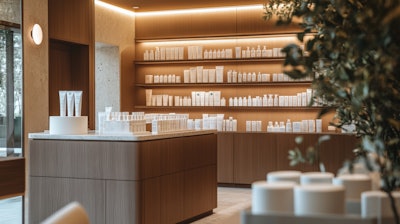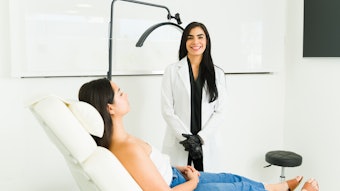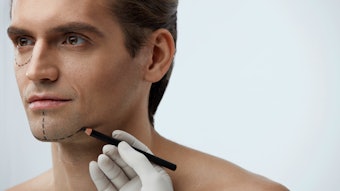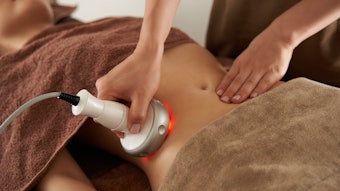
In today’s landscape of medical aesthetics, the patient experience no longer ends at the treatment chair. Patients increasingly seek a full spectrum of care, with solutions that enhance, extend and maintain their results. This shift creates a huge opportunity for practices to incorporate retail as a core revenue driver, benefiting patients and the practice’s bottom line.
Hence my emphasis on the impact of a retail strategy and to provide you with proven steps to transform retail into a powerful, patient-centered revenue stream.
Why Retail Matters in Aesthetics
While aesthetic treatments are integral to your practice’s revenue, retail offers a steady, predictable income that can significantly stabilize financial growth. Treatments have scheduling gaps, and patients may cancel or delay appointments. In contrast, a well-established retail operation offers continuous income that doesn't rely on patient scheduling, and provides an avenue to engage patients between treatments, keeping your practice and brand top of mind. Retail sales should account for approximately 20% of your total revenue.
Retail can reshape the patient experience by:
Boosting Patient Satisfaction and Treatment Outcomes
High-quality skin care is essential to maximizing treatment results. For example, if a patient has undergone a laser procedure, providing products specifically designed for pre and post procedure can improve healing and results. Not only does this show commitment to the patient’s outcome, but it also gives them a reason to trust your expertise and see you as the go-to authority on skin care. When patients achieve better, longer-lasting results, their satisfaction rises, translating to loyalty and positive referrals.
Increasing Profit Margins and Diversifying Revenue
Retail products often carry profit margins of 40-60%, making them an ideal supplement to treatment revenue. While certain treatments might have a low margin due to equipment costs, COGs, labor costs and competitive pricing pressures, retail can fill in those gaps, adding substantial profitability to each patient interaction. A balanced revenue model that includes retail allows for growth, regardless of treatment demand fluctuations.
Strengthening Patient Retention and Loyalty
Practices that offer comprehensive retail options become essential to patients’ skin care routines. When patients rely on your practice for their post-treatment and maintenance products, they’re more likely to return regularly, creating multiple touchpoints for future appointments. A well-managed retail program makes your practice not just a place for treatments, but a trusted skin care partner that patients depend on year-round.
Building a Retail Strategy: Key Considerations for Success
To be successful, your retail strategy should be treated as a core business element, rather than an afterthought. Here are some key elements of a powerful retail strategy:
Thoughtful Product Selection and Brand Alignment
It’s crucial to curate a retail selection that aligns with your treatment menu, brand values and patient needs. Patients trust your medical expertise, so ensure the quality and reputation of each product meets those expectations. Select brands that offer products for varying budgets, but emphasize quality and results. For example, if your practice specializes in anti-aging, select products that highlight these benefits and help patients maximize the impact of treatments, such as injectables or laser resurfacing.
Additionally, consider each product’s clinical efficacy. Does it reflect the clinical standards, trust and result-oriented care that your practice is known for? Clinical efficacy is a cornerstone of product selection, ensuring that each item delivers measurable, evidence-based results that complement your treatments. Prioritizing clinically validated products reinforces patient trust and aligns with the high standards of care your practice upholds.
Creating an Engaging Retail Environment
Your retail environment should be as meticulously designed as your treatment areas. Our team at Terri Ross Consulting often recommends that practices create a dedicated retail space, where products are displayed beautifully and attractively to invite exploration. Use lighting, clean displays and educational signage to help patients easily understand the benefits of each item. Oulaphone at Adobe Stock
Oulaphone at Adobe Stock
Where possible, incorporate “touch and feel” elements, like samples or mini-demo areas, which allow patients to experience products firsthand. This is particularly useful for practices offering medical-grade skin care, where patients may need reassurance of quality before purchase. Displaying retail items near high-traffic areas, like waiting rooms and checkout desks, increases visibility and accessibility.
Training Your Team for Retail Success
A trained team is essential for retail success. Educate your team on each product’s benefits, its use cases, and how it complements treatments. Create a culture where recommending products feels natural, not “salesy”—encouraging staff to integrate product recommendations in patient education.
Effective training includes role-playing sessions that give staff the opportunity to practice talking confidently about products. Equip them with talking points that position products as solutions rather than purchases, focusing on how these items can enhance results, support healing or prevent future skin concerns. With the right approach, your team becomes trusted advisors, helping patients understand the value of each product.
Integrating Retail into Every Patient Journey
Patients should encounter retail offerings as a natural part of their experience, starting with the consultation. Encourage providers to discuss product options that align with patient goals and outcomes as part of long-term treatment plans, turning each touchpoint into an opportunity for education and personalized recommendations. For example, after a microneedling session, the provider might suggest specific products to support skin repair and optimize the procedure’s effects. This is in alignment with why developing treatment plans is vital to the patient's outcomes.
Driving Repeat Sales with Membership and Loyalty Programs
Loyalty programs keep patients engaged and returning, making your practice an ongoing destination for skin care. Offer exclusive discounts on products or implement a points system where patients earn rewards with every purchase. Membership programs can also include special product bundles that align with treatments, creating a recurring revenue stream while building patient loyalty. When patients feel appreciated and rewarded for their patronage, they’re more inclined to choose your practice consistently for their aesthetic needs.
Marketing Your Retail Offerings: In-Office and Digital Strategies
Retail success relies on strategic marketing that makes patients aware of your offerings. Effective marketing connects the patient’s treatment goals to your retail selection.
In-office Marketing Strategies
Use visual merchandising to make an impact. Display promotional materials in areas where patients spend the most time, like waiting rooms or treatment rooms. For example, digital screens or brochures can promote popular products, seasonal specials or exclusive events. Special events, like product launch evenings or “skin care VIP” sessions, are powerful opportunities to showcase retail offerings, generate excitement and increase sales.
Digital Marketing and E-commerce
To expand reach, use digital platforms like social media, email campaigns and, if possible, an e-commerce option on your website. Social media allows you to educate patients on the benefits of products, share testimonials, and demonstrate how these products support treatment results. Email campaigns can create urgency with seasonal promotions, new arrivals or limited time offers, prompting immediate purchases.
Tracking Success: Metrics and Key Performance Indicators (KPIs) for Retail
Regularly tracking metrics will help refine your retail strategy and help you make data-driven decisions, ensuring it stays aligned with patient needs and practice goals. Here are some KPIs to keep in mind when it comes to retail:
- Revenue per Patient. Calculate average retail revenue per patient visit to measure retail’s impact on overall revenue.
- Product Turnover Rate. Assess how quickly products sell to determine popularity and identify underperformers.
- Conversion Rate. Track the percentage of consultations or treatments that result in a retail sale, indicating staff effectiveness.
- Repeat Purchase Rate. Monitor how often patients repurchase items, which signals satisfaction and loyalty.
Analyzing these metrics helps you adjust your retail approach for maximum impact, refine inventory and adapt strategies based on patient preferences.
Embracing the Retail Revolution
Incorporating retail effectively is a transformative move, one that positions your practice not only as a provider of services, but also as a trusted aesthetic partner in patients' skin care journeys. By building a thoughtful retail strategy, training your team and engaging patients, you tap into a revenue stream that drives long-term growth and patient satisfaction.











